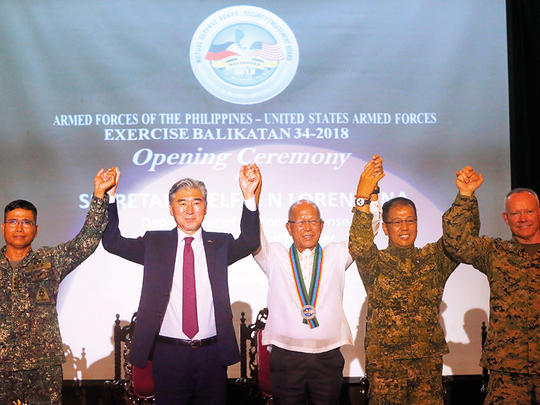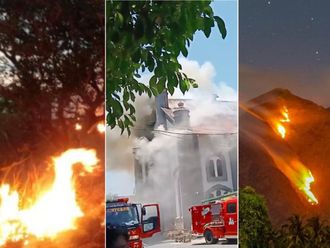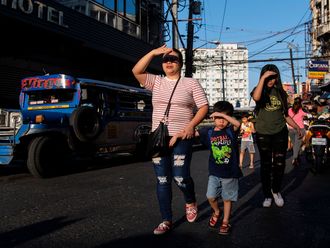
Manila: Annual “Balikatan” joint military exercises between the Philippines and the US forces started on Monday with more activities slated.
“Balikatan” which literally means “shoulder-to-shoulder” in Filipino, or a euphemism for camaraderie, was formally opened by US Ambassador Sung Y. Kim, Philippine Secretary of National Defence Delfin Lorenzana, and representatives of the Armed Forces of the Philippines and US military at Camp Aguinaldo in Quezon City. The 34th iteration of drills will run until May 18 at multiple locations in the northern main island of Luzon.
Last year, Balikatan and several other annual joint exercises between the Philippines and the US forces had almost been called off after President Rodrigo Duterte said he would not want to offend China by holding the exercises.
Duterte demanded that the drills instead focus on humanitarian and disaster risk reduction activities instead of holding combat exercises that centre on countering a mock invasion by an adversary, usually regarded as China.
But a year after the armed exercises will return, this time the adversary is not imagined and the scenario is based on the recent events in the country.
“We want both our forces to learn from our great and hard-earned experience in our past battles like Marawi and I think this is one of the highlight of this year’s activity,” Lt. Gen. Emmanuel Salamat, Balikatan Philippine Exercise director, said.
The fighting in Marawi City in Central Mindanao broke out in May 23 last year. It took Philippine forces six months to dislodge dozens of Daesh-inspired terrorists led by the Maute and Abu Sayyar from their positions.
It was the country’s first experience in fighting an adversary that was willing to stand ground so that they can establish a “caliphate” in Southeast Asia similar to those in the Middle East and North Africa by Daesh.
Philippine forces had been used to fighting opponents using guerrilla, hit-and-run tactics in fighting the communist New Peoples’ Army and occasional Moro liberation movements for more than half a century.
According to Salamat, the drills will involve around 5,000 soldiers, marines, airmen and sailors from the Armed Forces of the Philippines along with 3,000 coming from the US Marines, Navy, Air Force and Special Operations Command in the two-week manoeuvres.
Aside from the American and Filipino soldiers, 60 Australian and 20 Japanese troops will also take part as “observers.”
The Balikatan exercises also comes amid increasing fears in the Philippines over actions by China in disputed territories in the Spratly Islands in the South China Sea.
Reports said China had deployed air defence, as well as cruise missiles in the Fiery Cross, Subi, and Mischief Reefs on the Spratly Islands.
The presence of the missiles in the territory were being protested by Australia and the US.











